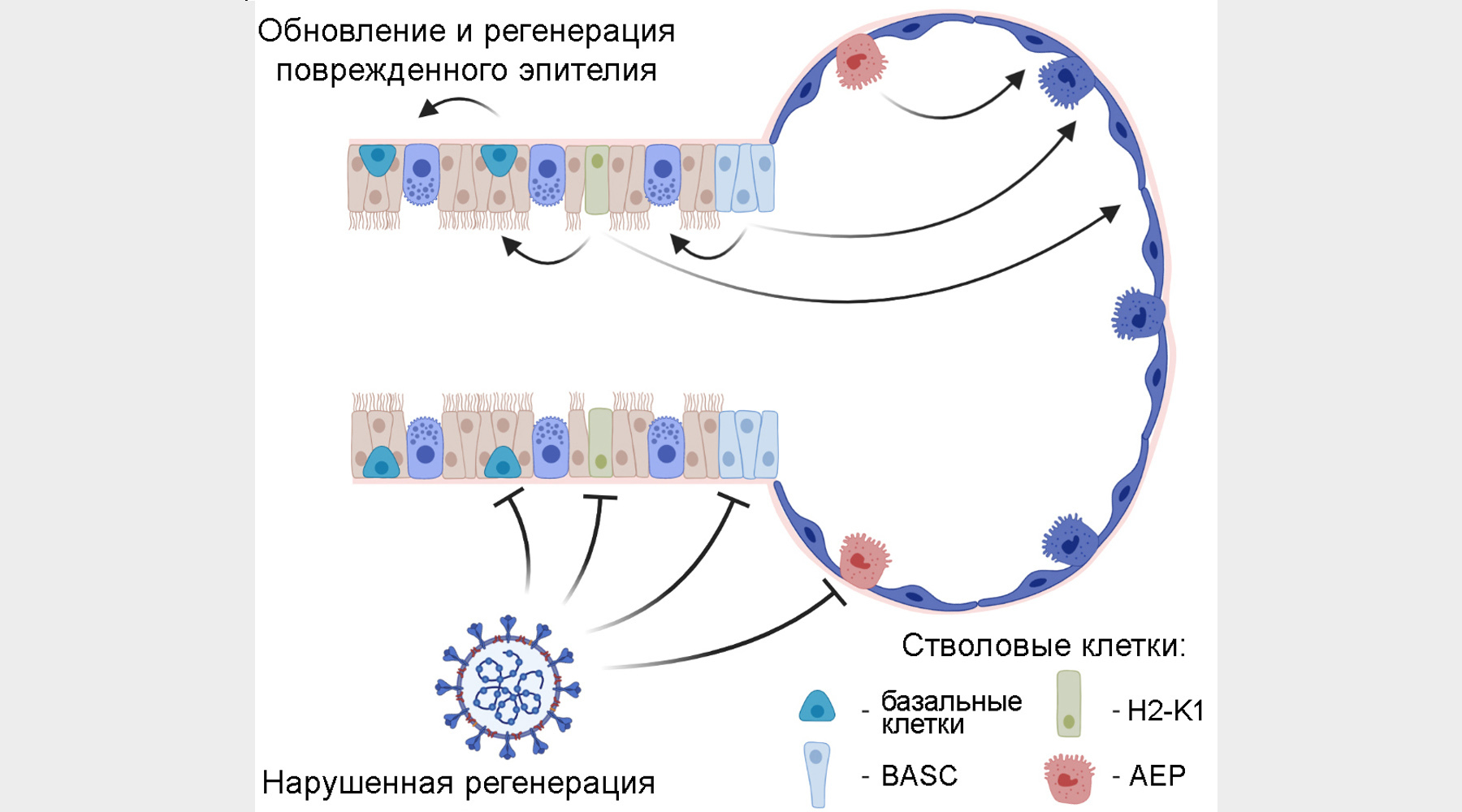A team of Russian scientists led by the staff of the Faculty of Bioengineering and Bioinformatics at Moscow State University and the Belozersky Research Institute of Physicochemical Biology at Moscow State University established the high sensitivity of stem cells to coronavirus infection.
This is reported in the journal Scientific Reports.
The researchers were faced with the task of finding out how the coronavirus penetrates the lower respiratory system, and also whether different types of epithelial stem cells can be infected with it.
To do this, they conducted a bioinformatic analysis of data on protein expression (controlled by certain genes of protein synthesis at the cellular level) required for cell infection.
The results of the work showed that stem cells produce exactly the genes that viruses need to penetrate.
“Stem cells in some cases may be even more susceptible to viral infection than the surrounding differentiated cells.
Stem cell infection can lead to impaired epithelial regeneration, which, as we assume, may be one of the reasons for the high pathogenicity of SARS-CoV-2, ”Anna Valyaeva, one of the authors of the study.
According to scientists, the first target of the virus is the epithelium, which lines the airways (trachea and bronchi) and the alveoli of the lungs (structures necessary for respiration in the form of microscopic bubbles).
Damage to epithelial stem cells can lead to disruption of its integrity, interfere with the restoration of the cell layer after damage.
Thus, COVID-19 is able to affect the lower respiratory tract and lead to severe damage to the lung tissue.
Stem cells provide renewal of the epithelium of the airways and alveoli of the lung in normal conditions and after various injuries (top).
These processes can be hampered by infection with SARS-CoV-2 (below)
© Evgeny Sheval / Moscow State University
The researchers believe that the data they obtained will allow them to further determine which cells and to what extent may be targets of the virus.
Knowing the functions of these cells, one can not only assume what consequences their infection and death will lead to, but also find possible ways to prevent these processes.
As scientists note, the emphasis is on studying the effect of viral proteins on pulmonary epithelial cells and elucidating the reasons for the high pathogenicity of coronaviruses.
“It is interesting and at the same time important to understand what distinguishes those coronaviruses that cause serious illnesses rather than mild colds.
This may also have practical significance, and, not only in relation to the current pandemic, but also to those infections that may appear in the future, ”concluded Evgeny Sheval, head of the laboratory of ultrastructure of the cell nucleus of Moscow State University.

